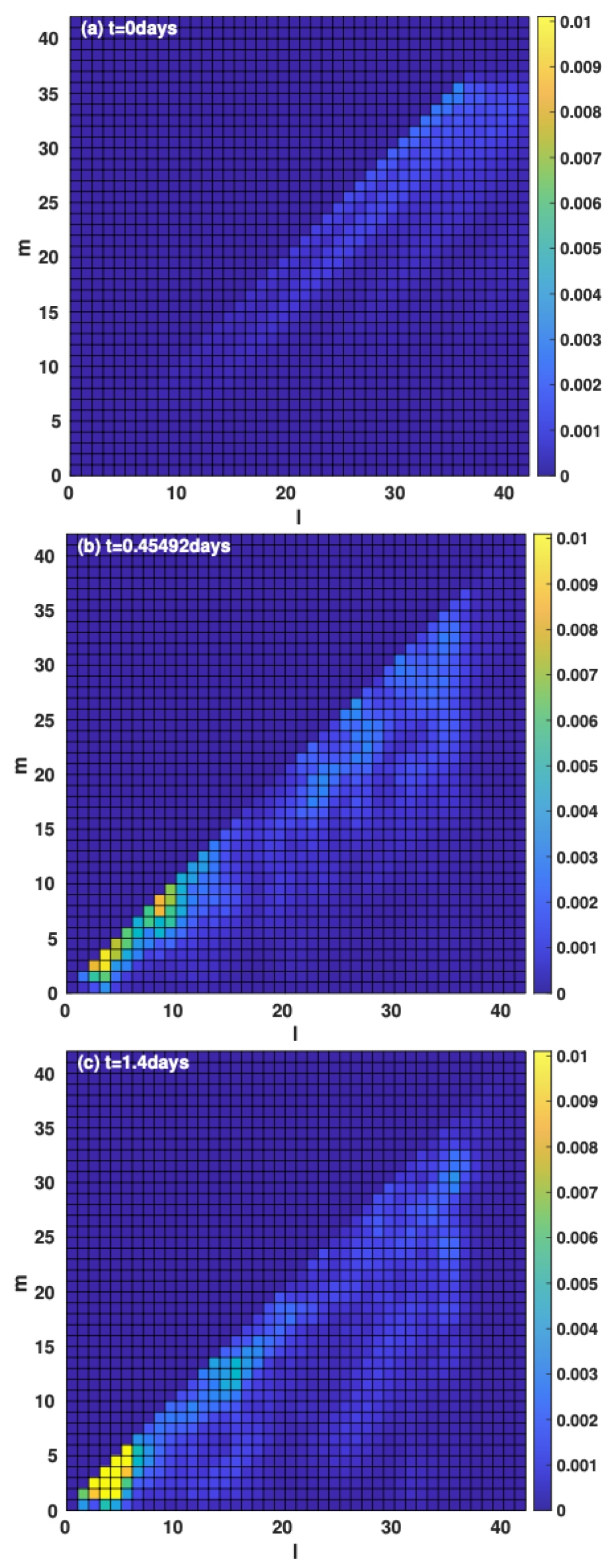Astrophysical Journal—M. Dikpati, P. A. Gilman, G. A. Guerrero, A. G. Kosovichev, S. W. McIntosh, K. R. Sreenivasan, J. Warnecke, T. V. Zaqarashvili

Three snapshots during evolution of kinetic energy spectra in spectral space, for initial solid rotation, in a T42 model.
Rossby waves are found at several levels in the Sun, most recently in its supergranule layer. We show that Rossby waves in the supergranule layer can be excited by an inverse cascade of kinetic energy from the nearly horizontal motions in supergranules. We illustrate how this excitation occurs using a hydrodynamic shallow-water model for a 3D thin rotating spherical shell. We find that initial kinetic energy at small spatial scales inverse-cascades quickly to global scales, exciting Rossby waves whose phase velocities are similar to linear Rossby waves on the sphere originally derived by Haurwitz. Modest departures from the Haurwitz formula originate from nonlinear finite amplitude effects and/or the presence of differential rotation. Like supergranules, the initial small scale motions in our model contain very
little vorticity compared to their horizontal divergence, but the resulting Rossby waves are almost all vortical motions. Supergranule kinetic energy could have gone mainly into gravity waves, but we find that most energy inverse-cascades to global Rossby waves. Since kinetic energy in supergranules is three or four orders of magnitude larger than that of the observed Rossby waves in the supergranule layer, there is plenty of energy available to drive the inverse-cascade mechanism. Tachocline Rossby waves were previously shown to play crucial roles in causing "seasons" of space weather through their nonlinear interactions with global flows and magnetic fields. We discuss briefly how various Rossby waves in tachocline, convection zone, supergranule layer and corona can be reconciled in a unified framework.